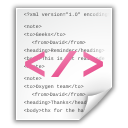This item is
Attribution-NonCommercial-ShareAlike 3.0 Unported (CC BY-NC-SA 3.0)
Publicly Available
and licensed under:Attribution-NonCommercial-ShareAlike 3.0 Unported (CC BY-NC-SA 3.0)
Files for this item
Download all local files for this item (306.45 KB)

- Name
- perception-0964.txt
- Size
- 303.06 KB
- Format
- Text file
- Description
- Version of the work in plain text format
In-1
Introduction
The elements of perception may be identified by their simplicity. They are
simple in the sense that they cannot be in any way transformed; they are proper
elements because they genuinely provide the foundations of empirical claims.
The development of the analysis of perception leads to the recognition
first of unbridgeable differences in sensory experience, and thence to the
limits which sense imposes on theory. Subsequently some contemporary puzzles
are recast in a less misleading or more promising form and solutions are
proposed.
It is possible to identify sensory information about the world and so
distinguish this information from any theories in which it may figure. A clear
division can be drawn between observation statements which are comparatively
complex assertions about what is perceived or what, in principle, could be
perceived, and the literally sensed information which at the prese . . .






